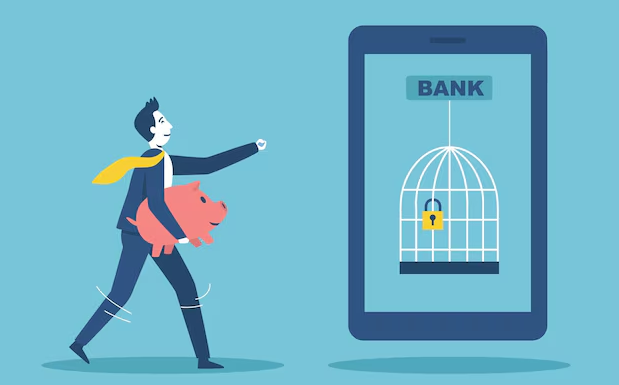Managing your finances is crucial in today’s fast-paced world, and one of the most important aspects is keeping track of your bank account. While banks offer numerous services to make managing your money easier, they often come with a cost that isn’t always transparent.
Hidden fees can quickly accumulate and erode your hard-earned savings if you aren’t careful. This guide will help you identify and avoid these hidden fees in American bank accounts, ensuring that you keep more of your money where it belongs—in your pocket.
Monthly maintenance fees: A silent drain on your balance

Monthly maintenance fees are a common but often overlooked expense associated with American bank accounts. Banks typically charge these fees to maintain your account, but many customers are unaware of their existence until they see a deduction in their balance. These fees can range from $5 to $15 per month, and while they may seem small, they add up over time, silently eating away at your savings.
To avoid these fees, the first step is to understand the requirements for fee waivers. Many banks will waive monthly maintenance fees if you meet certain criteria, such as maintaining a minimum balance, setting up direct deposits, or linking multiple accounts. It’s essential to read the fine print of your account agreement to know exactly what’s required to avoid these charges.
Another way to avoid monthly maintenance fees is by choosing a bank or account type that doesn’t charge them. Many online banks and credit unions offer no-fee checking and savings accounts, which can be a great alternative if you’re looking to minimize unnecessary expenses. Additionally, some banks offer student or senior accounts with no monthly fees, so it’s worth exploring these options if you qualify.
Lastly, if you’re currently paying a monthly maintenance fee, consider reaching out to your bank. Sometimes, banks are willing to negotiate or offer solutions to loyal customers, especially if you’ve been a long-time account holder. It never hurts to ask if there’s a way to reduce or eliminate these fees altogether.
Overdraft fees: The cost of a small mistake
Overdraft fees are among the most common hidden fees that customers face, and they can be particularly costly. These fees are charged when you spend more money than you have in your account, causing your balance to go negative. While it might seem like a small mistake, banks typically charge hefty fees for overdrafts, often ranging from $25 to $35 per occurrence. If you’re not careful, a few overdraft fees can quickly snowball into a significant financial burden.
To avoid overdraft fees, it’s crucial to stay on top of your account balance. Many banks offer online banking tools and mobile apps that allow you to monitor your balance in real-time, which can help you avoid spending more than you have. Setting up account alerts can also be an effective way to stay informed. These alerts can notify you when your balance falls below a certain threshold, giving you time to adjust your spending or transfer funds before an overdraft occurs.
Another strategy to avoid overdraft fees is to opt out of overdraft protection. While it might sound counterintuitive, opting out means that if you try to make a purchase that exceeds your balance, the transaction will simply be declined rather than processed with an overdraft fee. This can save you from costly fees in the long run, even if it means facing the occasional inconvenience of a declined transaction.
Finally, consider linking your checking account to a savings account or a line of credit. Many banks offer this service, which automatically transfers funds to cover any overdraft, often for a smaller fee or no fee at all. This can be a lifesaver if you accidentally overspend, ensuring that you avoid the high costs associated with traditional overdraft fees.
ATM fees: Paying for convenience
ATM fees are another hidden cost that can catch customers off guard, especially when using out-of-network ATMs. When you withdraw cash from an ATM that isn’t part of your bank’s network, you can be charged fees by both your bank and the ATM owner. These fees can range from $2 to $5 per transaction, which might not seem like much, but they can add up quickly if you frequently use out-of-network ATMs.
To avoid ATM fees, the most straightforward strategy is to use ATMs that are part of your bank’s network. Most banks offer a network of ATMs where you can withdraw cash for free, so it’s worth familiarizing yourself with the locations of these ATMs, especially if you’re in a new area.
Additionally, some banks offer ATM fee reimbursements, which can be a great way to avoid these charges altogether. This feature is often found with online banks and credit unions, making them an attractive option if you frequently need cash.
If you often find yourself needing cash but can’t find a network ATM, consider using a debit card to get cashback at retailers. Many grocery stores, pharmacies, and other retailers offer cashback with a purchase, allowing you to withdraw small amounts of cash without incurring ATM fees. While this might not be suitable for large withdrawals, it can be a convenient way to avoid fees for smaller amounts.
Another tip to avoid ATM fees is to plan your cash needs in advance. By withdrawing larger amounts of cash less frequently, you can minimize the number of ATM transactions and, therefore, the associated fees. While it might require a bit more planning, this approach can save you a significant amount of money over time.
Hidden fees in American bank accounts can be a significant drain on your finances if you’re not vigilant. By understanding common fees like monthly maintenance charges, overdraft fees, and ATM fees, you can take proactive steps to avoid them.
Whether it’s by meeting waiver requirements, opting out of overdraft protection, or using in-network ATMs, there are plenty of strategies to keep your money safe from hidden costs. With a little attention to detail and some proactive planning, you can ensure that your bank account works for you, not against you.






